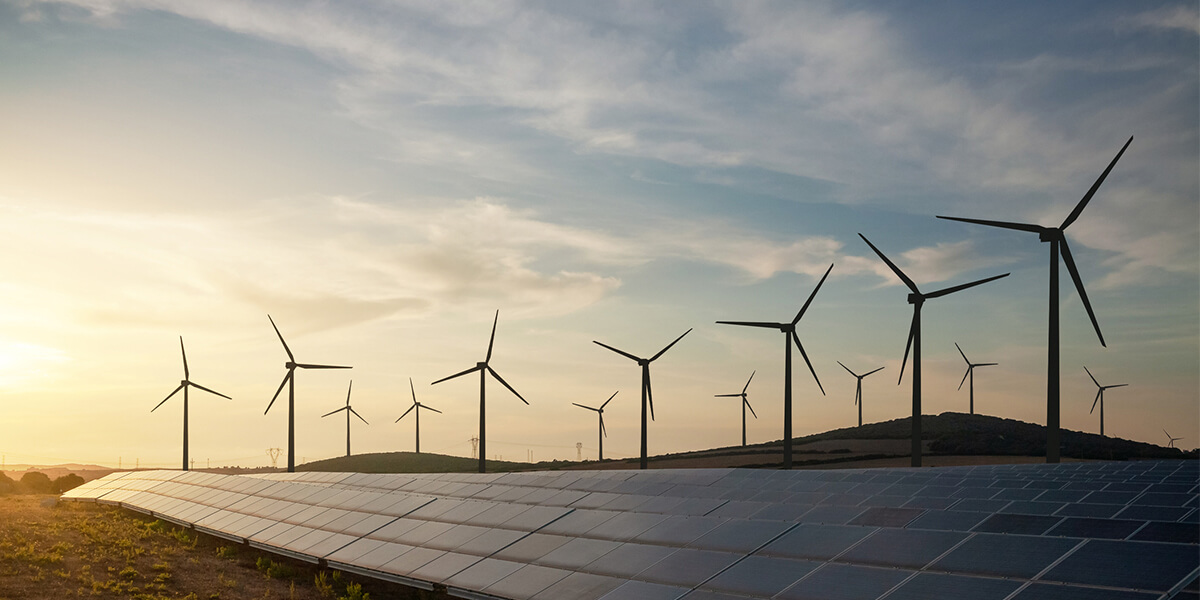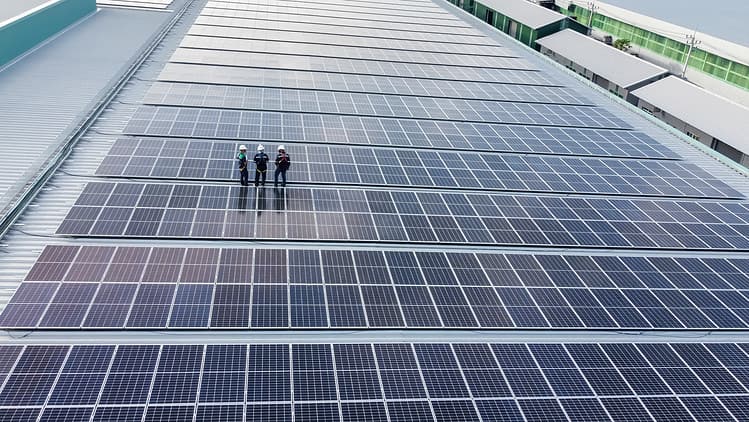
From the parlor to the pasture, numerous advancements in dairy farm management are helping drive up dairy farm efficiency in North America, and that’s helping drive down environmental impact.
Everything starts with animal productivity. The North American dairy industry now requires 930,000 fewer cows to produce the same amount of milk as in 2007. Farm management practices, genetics, and animal care have all paved a major role in this achievement. However, technology is the key enabler to truly unlocking the maximum benefits of each of those practices.
“Over the past 15 years, the industry has gained a better understanding of how to go about managing a dairy animal,” said Chad Huyser, president of Lely North America. “Technology is allowing us to understand better the animal’s genetic potential and how we feed to that potential.”
Technology is also helping dairy farmers better understand how to manage some of the cost drivers around dairy. Advances in nutrient management and precision agriculture technologies are helping optimize the use of resources to manage cropland more efficiently. Sensor-based technologies are helping optimize feed ration quality, which directly impacts milk yield. Altogether, dairy farmers can produce a lot more with a lot less—which directly impacts the environment.
AEM’s new report, “Environmental Benefits of Modern Dairy, Hay, and Forage Production Technologies,” points out several statistics that help quantify the environmental impact of modern dairy practices in the U.S. and Canada. As milk yield increased 19% over the past 15 years:
- Feed use decreased by 15%
- Land use decreased by 26%
- GHG emissions decreased by 17%
- Water use decreased by 10%
“The environmental impact of the dairy industry’s advancements has been phenomenal thus far, and the application of new technologies and best management practices has led us to this point,” said Fabian Bernal, head of sustainability at DeLaval.
“Over the past 15 years, the industry has gained a better understanding of how to go about managing a dairy animal. Technology allows us to understand better the animal’s genetic potential and how we feed to that potential.” — Lely North America's Chad Huyser
Technology in and of itself cannot transform the dairy industry. Technology is the catalyst that allows other advancements to maximize their impact. According to Huyser, the ability to harvest data related to animal health, milking, feed rations, crops, and weather allows dairy farmers to harvest the true genetic potential of each animal.
Take a feed, for example. Near-infrared (NIR) sensor technology on harvesting equipment can help predict the feedstock quality that will ultimately go into the animal. More than 4,000 samples are automatically taken per second, as opposed to 15 or 20 per season when done the old-fashioned, manual way. This more robust dataset provides deeper, instantaneous insights into the quality of the feedstock. Once harvested, that feedstock goes into storage, combined into a ration with supplements and additives to create the highest-quality feed possible.
At the same time, robotic milking equipment is generating its own set of data that can help farmers better monitor lactation cycles. “Since we know the quality of the feed ration we’re putting into the animal, we can monitor production over several lactation cycles,” Huyser said. “From there, we can start to determine what would happen if we adjusted the feed ration slightly here or there.”
The cumulative effect of multiple technologies and data pieces helps the dairy farmer make smarter decisions that drive efficiency, productivity, and sustainability. What are some of the other technologies impacting modernized dairy farms? Bernal immediately pointed to animal care.
“Today we have technologies like pedometers and what essentially are Fitbits for animals,” Bernal said. “Those technologies are helpful because it’s important to monitor animal bodyweight, health, and comfort to get the most production out of that animal. We also have technologies to help determine how much an animal is eating, ruminating, and utilizing their feed.”
“At every robotic milking facility I’ve ever visited, the animal welfare was higher,” added Matt Daley, North American president of GEA Farm Technologies. “The cows are better cared for because the farmer has all this data.”
Technological innovation is also helping ensure cows are fed better. We already touched on the role NIR sensors are playing concerning feed ration quality. Additionally, advanced feeding systems help ensure each cow gets the nutrition required to reach its full genetic potential.
“Robotic feeding systems provide a more stable diet and better dietary intake,” Daley said. “That increases the cow’s potential for a healthier and longer life, which increases the amount of milk it can produce over its lifetime. Plus, robotic feeding systems are battery-operated, which is also good for the environment.”
Robotic milking equipment can provide troves of valuable data to help farmers maximize the genetic potential of each cow. But another string of data can also help drive productivity and sustainability.
“Sensors on the milking equipment tell farmers how it operates,” Daley said. “For example, a pulsation monitor could immediately notify the farmer of a malfunction or failure that could impact yield if left unattended for too long. Without this telematics technology, the farmer may not notice something like this for a month or longer.”
As Daley pointed out, many of these productivity-enhancing innovations have an “unintentional” effect of benefiting the environment. “At the same time, there are also technologies intentionally designed to present the farm with a more sustainable solution,” he added.
Concerning land conservation, precision agriculture technologies such as machine auto guidance, section control, and variable rate are helping to ensure that each acre is managed as efficiently as possible. The same applies to water, thanks to technologies like soil moisture sensors, weather monitors, and precision irrigation equipment.
Manure management is another area of focus. Robotic manure collectors, manure processing systems, and methane digesters are among the innovations helping dairy farms reduce their GHG emissions and convert waste into valuable fertilizer and renewable energy. GEA Farm Technologies is introducing an innovation designed to help dairy farms reduce their reliance on chemical fertilizers while eliminating methane emissions from manure storage.
“This new container-based solution uses air and electricity to turn manure into a more effective fertilizer,” Daley said. “Plasma technology prevents the ammonia from being released into the atmosphere, thereby improving air quality while making valuable nitrogen more available to the plant.”
When looking at the impact of technological innovations like these, the North American dairy industry has been able to achieve the following over the past 15 years:
- 112 billion pounds of feed saved, enough to fill 3,200 NFL stadiums
- 2 million fewer acres are needed for cropland, roughly the size of Maryland
- Reduction in GHG emissions equivalent to 4 million cars off the road
- Enough water is saved each year to supply New York City for two years
As impressive as these results have been, Bernal says the dairy industry can achieve more.
“Are we taking advantage of these technologies on as broad a scale as we would like? Maybe not,” Bernal related. “We need to help farmers and continue generating more interest in these technologies. Nonetheless, we have done well, and I believe we have a great path forward.”
Learn how North American milk became the model of sustainability.
Coupled with the leveraging of other innovative technologies and farm management practices, the following could be achieved by 2030:
- Milk yield increased another 11%
- Feed use was reduced by another 19%
- Another 9% reduced land use
- Another 19% reduced GHG emissions
- Water use was reduced by another 4%
“Are we taking advantage of (technological innovations) on as broad a scale as we would like? Maybe not. “We need to help farmers and continue generating more interest in these technologies. Nonetheless, we have done well, and I believe we have a great path forward.” — DeLaval's Fabian Bernal
How does the industry get there? First and foremost, there must be continued adoption of the innovations that have led to this point. Fortunately, North American dairy farmers don’t have the same level of skepticism they did years ago when many of these new technologies were first introduced.
“We’ve moved past the question of whether or not these types of technologies can positively impact a dairy farm,” Huyser said. “It is no longer a matter of if, but when.”
What could influence the “when”? Huyser said it’s important to recognize the farmer’s business case consideration behind their investment in new technologies. “Farmers want to see a financial return, as well as an animal welfare and sustainability return,” he added.
Farmers also need financial resources to help make these types of investments. “Farmers need to be able to grow through diversification, or make the necessary capital investments that enable growth,” Bernal said.
On that note, Bernal said the North American dairy industry could benefit from government policies that reward innovation. “If policies allow us to move a bit faster, especially in terms of validation and application of new technologies, I believe that will greatly help farmers,” Bernal said.
Government regulation can also have an influence. Huyser is optimistic that the North American dairy industry’s proactive approach to sustainability will continue to be the driving force.
“We need to continue seeing a regulatory environment that encourages the use of technologies to enable better decision-making,” Huyser said. “We don’t need more rules and regulations trying to steer us in a certain direction. We need support, and we need to be collaborative.”
Bernal said the dairy industry also needs to see more emphasis on infrastructure. One part is the basic infrastructure that enables the more efficient transport of goods. But more importantly, dairy farmers in rural America need internet connectivity to power today’s data-driven technologies.
Once farmers can count on connectivity, Bernal says the dairy industry can count on more widespread technology adoption. And once the industry sees more widespread adoption, it can begin unlocking the true potential of data and knowledge and a more productive and sustainable approach to dairy farming.
The Association of Equipment Manufacturers (AEM), The National Milk Producers Federation, and Dairy Farmers of America issued a study quantifying the benefits of modern dairy technologies and how they have positively impacted consumers, dairy farmers, and cows over the past 15 years.
The study was unveiled at World Dairy Expo in Madison, Wisconsin, late last year.




